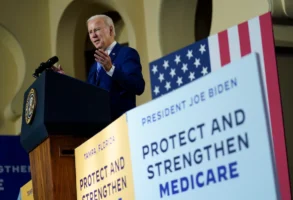Published August 24, 2015
National Review - September 7, 2015 issue
Donald Trump’s meteoric rise has perplexed most pundits. Trump doesn’t fit into the traditional categories of GOP aspirants, so many have found it hard to say why he has risen and to discern whether he has a realistic shot at the nomination. The most common explanations are that he is either attracting tea-party conservatives or wooing the same bloc of socio-economically “downscale” voters that backed Ross Perot in 1992.
A close look at the data, however, shows that neither explanation is quite accurate. The polls indicate that Trump’s support is unusually balanced among the GOP’s ideological factions for a candidate this early in the race. While this superficially suggests that his chances of winning the nomination are better than commonly thought, an even closer look shows that Trump’s appeal is likely to be deep but very limited.
Trump’s early lead doesn’t mean as much as the media say, because presidential nominations are not the typical one-day primary. In a normal primary, a candidate can win the nomination with a small plurality in a multi-candidate field simply by getting one more vote than his closest rival. That’s why Matt Bevin became Kentucky’s Republican nominee for governor this year: In a four-way race, he received 83 votes more than the runner-up, securing victory with only 33 percent of the vote.
Presidential-nomination contests, by contrast, are a series of one-day votes held over many months. Since many candidates drop out after disappointing losses, a candidate can easily win early contests with small pluralities but get clobbered later on, as voters who would have supported rivals who dropped out swing toward another candidate.
This is what happened to Pat Buchanan in 1996: He won New Hampshire and finished second in Iowa, with about a quarter of the vote in each instance. But as other candidates dropped out, voters swung to Bob Dole, propelling him to easy wins in most subsequent contests. So the key question for Trump is whether he has a chance to build on his early lead — assuming he holds it — in later races as losing candidates drop out.
Virtually all the available poll data show that Trump is drawing his current support from across the center–right ideological spectrum. The six national polls that show how candidates fare among voters with different ideologies find that moderates, “somewhat conservatives,” and hard-core (“very”) conservative voters support him in roughly equal measures. All polls show Trump’s share of support from each faction within three points of his share of the total. Support from “movement conservatives” is far from the sole — or even the primary — reason for his rise.
The data from Iowa and New Hampshire also present a mixed message. Post-debate Iowa polls show Trump running best among moderates, while pre-debate New Hampshire polls show him running best among tea partiers and the very conservative, two groups whose adherents largely overlap. In neither case, however, does his support tilt so strongly toward one faction that he can be said to be that faction’s candidate.
Compare Trump’s profile with Ted Cruz’s. Many observers have interpreted Cruz’s refusal to criticize Trump as evidence that the two are competing for the same bloc of voters. Cruz’s support tilts heavily toward the most conservative wing of the party. The Public Policy Polling post-debate Iowa poll, for example, shows Cruz supported by 16 percent of voters whose most important criterion for a nominee is that he be the most conservative on the issues. Cruz gets only 4 percent among the larger group whose most important criterion is that the nominee be able to beat the eventual Democratic candidate. Trump, in contrast, gets 21 percent of those who want the most conservative candidate, and 16 percent of those who want to beat the Democrat.
Trump’s support is also evenly distributed among independents, and among Evangelicals and non-Evangelicals. Polls are mixed on whether he is significantly stronger among tea-party voters, but even surveys that find him with higher support among tea partiers than among all Republican-primary voters show that he has strong support among non–tea partiers as well. Cruz, by contrast, typically does very well among tea partiers and very poorly among non–tea partiers.
Trump often polls better among voters without a college degree (although this difference does not consistently carry over when voters are sorted by income). Voters without a college degree typically back Trump by two to four points more than his overall total; those with a college degree support him by two to four points less. This suggests that Trump’s support is slightly “downscale” in a way reminiscent of Perot’s. But the fact that Trump runs evenly among Republicans and independents, on the other hand, suggests that Trump and Perot are not quite the same: The latter was more popular among independents than among Republicans. The one poll that has asked whom voters would support in the event of a Clinton–Bush–Trump race found that the voters likeliest to back Trump were Republicans and very conservative voters. These voters largely stayed with Bush 41 in 1992, when Perot got 18 percent of the vote.
If these were all the data, we would have to conclude that Trump is currently a strong candidate to win the nomination. But these aren’t all the data, and other information suggests that Trump will have a very hard time building on his current support in later races.
We can see this from two other questions polls often ask — namely, whether voters have a favorable or unfavorable impression of a candidate and whether voters cannot support a candidate under any circumstances. Trump polls much more poorly on these questions than he does on questions of voter preference.
Trump’s favorable-to-unfavorable ratio is the lowest of the major candidates’. His positive rating always ranges between 52 and 44 percent, whether the poll is of national or state voters. His negative rating always ranges between 33 and 46 percent, and is usually in the 38–43 range. Most major Republican candidates are getting positive ratings in the 60s and low 70s, with negative ratings well below 20 percent. Even Jeb Bush has significantly higher positives and lower negatives than Trump. Christie, Graham, and Pataki are typically the only candidates thought of less highly than Trump.
Moreover, Trump receives the highest “would never vote for” ratings among the major candidates. A Quinnipiac national poll taken before the debate, for example, found that 30 percent of Republican-primary voters would never support Trump, the highest number among all the candidates. A late-July Fox national poll similarly found that 33 percent of GOP voters would never support Trump in the primary, a share that only Christie, Pataki, and Graham exceeded.
These data are even more troubling for Trump when we dig deeper. Sharp ideological differences are apparent in Trump’s favorable–unfavorable ratios, in contrast with the voter-preference question. His favorable rating exceeds his unfavorable one by roughly a 3–1 margin among tea partiers and a 2–1 margin among “very conservative” voters. “Somewhat conservatives” tend to split evenly, and moderates dislike him by a 55–40 percent margin.
Why is this problematic for Trump? Tea partiers and “very conservative” voters are a large minority, but a minority nonetheless. In primary states, exit polls show that moderates tend to constitute 30–40 percent of the total vote outside the Deep South, rising to 40–50 percent in the Northeast and Mid-Atlantic states. “Somewhat conservatives” tend to constitute 33–40 percent of Republican-primary voters in most states. Trump’s poor showing among these groups bodes ill for his ability to win outside the South and in midwestern caucus states once the early primaries have winnowed the candidates.
These ideological differences are mirrored in the measures of those who say they will never back Trump. In the Quinnipiac poll, only 19 percent of tea partiers said they would never back him. But that number rose to 22 percent among “very conservatives,” 26 percent among Evangelicals, 29 percent among “somewhat conservatives,” and a whopping 39 percent among moderates. Trump’s currently high vote shares among moderates and establishment conservatives, then, may represent a ceiling more than a floor.
There was also a strong gender gap among Trump’s supporters, even before the Megyn Kelly debate dustup. Men typically support Trump by at least three points more than his overall total, while women back him by two to six points less. Men also view Trump much more favorably than do women: Men tend to view him positively by a ten- to 20-point net margin, whereas women either split evenly or view him negatively by up to a ten-point net margin.
We see an even larger gender gap in answers to the “would never vote for” question. Before the debate, about 36 percent of women said they would never vote for Trump, compared with between 25 and 29 percent of men. One cannot imagine that women have become more favorable toward Trump since then.
The takeaway is pretty clear. Trump may have more appeal among tea-party and “very conservative” voters than among others, but he is primarily a protest candidate for the angry of all persuasions. Unless he can somehow persuade women, the college-educated, and those from the center and the center–left of the GOP to change their minds, he is very likely to find his upside limited as other candidates start to drop out, assuming that he is in for the duration. This suggests that an establishment alternative will still have the advantage, passions unleashed by Trump notwithstanding.
— Henry Olsen is a senior fellow at the Ethics and Public Policy Center. This article also appears in the September 7, 2015, issue of National Review.








